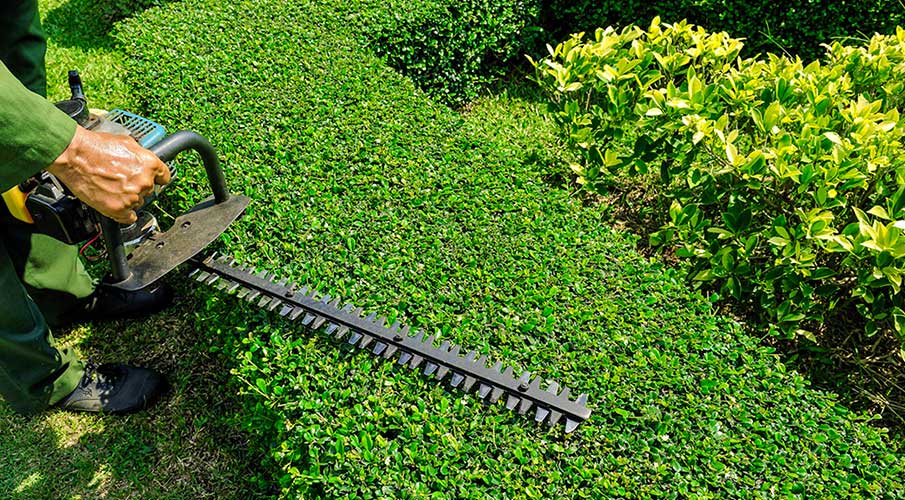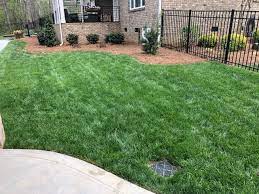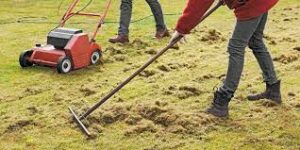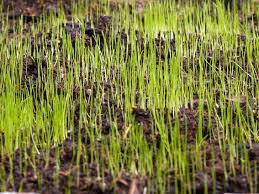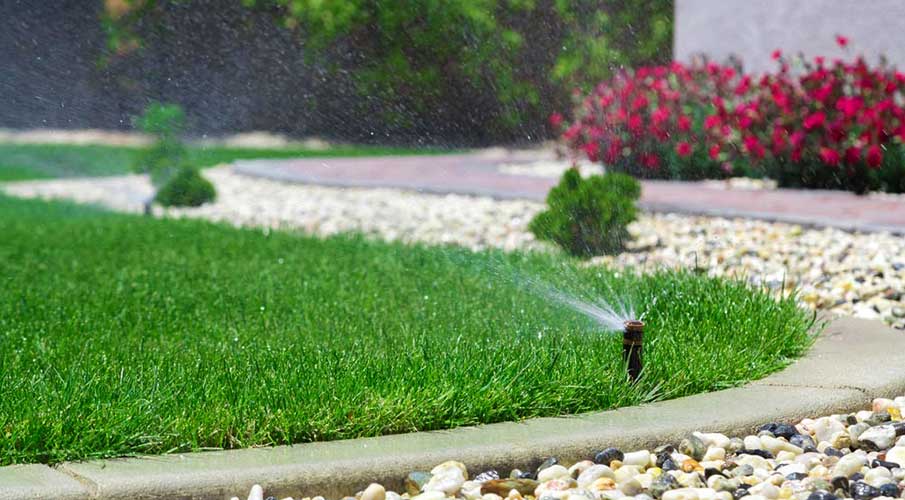Homeowners with fescue lawns in the transition zone face some added challenges when figuring out how to prevent weeds. Fescue is our best choice for grass, but our hot Summers are harsh on the cool-season turf. If you want to maintain a lush, green lawn that is free from weeds, you have to take care when putting together a lawn care program. Good lawn care is all about doing the right things at the right times. Here, we’ll tell you how you can prevent weeds in your lawn by discussing the two pillars of weed control, having thick healthy turf and using weed killers. It’s a common misconception that weed killers are the main factor in preventing weeds. A good lawn care program gets 70% of its weed control from thick healthy grass, and the other 30% from weed control products. Below, we’ll tell you the main activities that keep your lawn thick and healthy and give you the basics for using weed killers. Click on any of the links below to get more information on the specific subject.
Why do I care about the weeds?
Not only do weeds detract from the appearance of your lawn, but they also compete with your grass for water and nutrients, leading to a weaker and less dense turf. To prevent weeds and keep your fescue lawn healthy, it’s important to maintain the density of the turf, prevent disease, fertilize regularly, use weedkillers, and water the lawn to counteract heat stress.
Keep Your Lawn Thick and Healthy
The best way to prevent weeds in your lawn is to maintain healthy, dense turf. This means making sure that your grass is growing thick and full, which makes it difficult for weeds to take root, compete for nutrients, and grow. 70% weed control can be achieved just by having healthy grass. Weed-killer products help to cover the other 30%. Below we’ll go over the key activities that make a perfect lawn.
Mow Regularly at the Right Height
You may have heard of the 1/3 rule for mowing. It states that you shouldn’t cut off more than a third of the grass at a time, even if you have to cut twice a few days apart to achieve the desired height. It stresses the grass unnecessarily to cut off more than a third at once. For this reason, it is best to mow weekly as regular cuttings will help to keep the grass healthier. When mowing, cut the lawn at a height of 3 to 4 inches. The common recommendation is to cut fescue shorter, but we find that it is more resilient to heat stress when left a bit longer. This also allows the roots to grow deep and strong, making your lawn more resilient to weed invasion. Always keep your mower blades sharp to reduce stress from cutting and prevent the “frosted tips” look. Learn the nuances of mowing in our article, “Mowing the Lawn: Everything You Need to Know.”
Preventing Disease
Diseases weaken the turf, allowing weeds to creep in. They can be a big problem for turf in humid environments Diseases like rust, brown patch, and dollar spot are common. To prevent disease, make sure to water your lawn properly, avoid overwatering and waterlogging, and apply fungicides when necessary. Many lawns will have diseases show up, but they are not always bad enough to require treatment. Fescue can be very disease resistant when properly cared for. However if you notice the grass thinning out from fungus, it’s time to treat it!
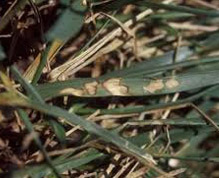
Fertilizing Regularly
Fertilizing your lawn regularly is the most important step to prevent weeds in your lawn. Fertilizer provides your grass with the nutrients it needs to grow strong and healthy, which in turn makes it more resistant to weed invasion. When selecting a fertilizer, be sure to choose one that is formulated for fescue grass and contains a balanced mix of nitrogen, phosphorus, and potassium. It’s also important to apply fertilizer in the right amount, for the right time of year, so be sure to follow the manufacturer’s instructions carefully.
Watering the Lawn to Counteract Heat Stress
Next to fertilizing, watering your lawn is the next most important activity. While not as important during a wet Spring season, you have to water that grass over the Summer. Fescue grass is particularly susceptible to heat stress, which can cause it to weaken and die. To prevent heat stress, make sure to water your lawn deeply at least twice a week, especially during hot and dry periods.
Aerate and Overseed Regularly
Aeration and overseeding are critical components of maintaining a healthy and vibrant fescue lawn in the transition zone. Aeration allows for air, water, and nutrients to penetrate the soil, promoting deeper root growth and increasing the lawn’s ability to withstand stress from heat and drought. Overseeding helps to maintain the density of the turf, filling in thin or bare spots and improving the overall appearance of the lawn. It also helps to promote the genetic strength of the lawn, making it less susceptible to disease and pests. Aeration is recommended twice a year and overseeding is recommended once a year for fescue lawns.
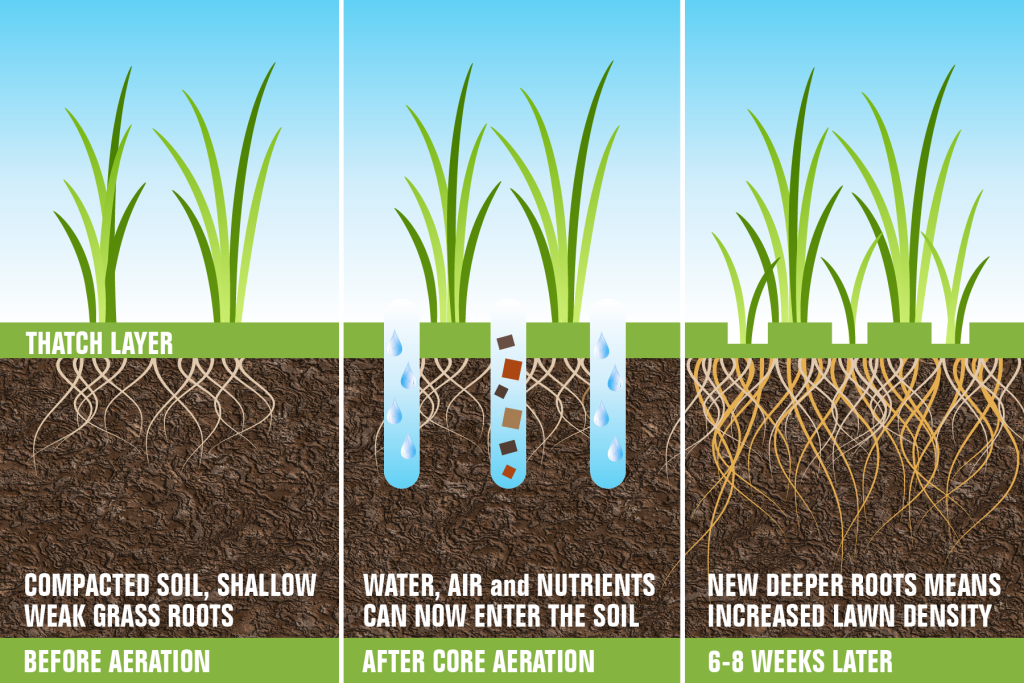
Using Weedkillers to Prevent Weeds in Your Lawn
While maintaining a healthy lawn is key to preventing weeds, sometimes weedkillers may be necessary to keep your fescue lawn weed-free. There are two main types of weedkillers: pre-emergent and post-emergent. Pre-emergent weedkillers are applied before weed seeds have germinated, preventing them from taking root in your lawn. Post-emergent weedkillers, on the other hand, are applied after weeds have emerged and are designed to kill established weeds. When selecting a weedkiller, be sure to choose one that is formulated for fescue grass and is safe for use in your area.
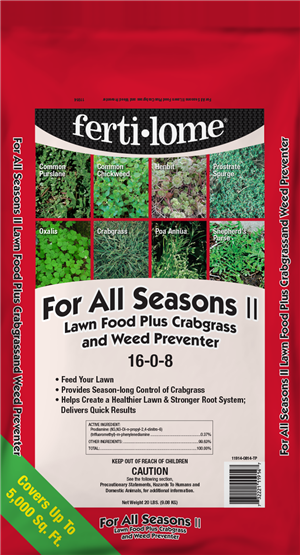
In conclusion, preventing weeds in your fescue lawn in the transition zone requires a multi-pronged approach. It includes maintaining the density of the turf, preventing disease, fertilizing regularly, using weedkillers, and watering the lawn to counteract heat stress. By taking these steps and following best practices, you can ensure that your fescue lawn remains healthy, green, and weed-free. You can follow the links throughout the article above to learn more about each facet of lawn care.
Want a professional to take care of the services above? Click here to get a quote from Midwest Turf Pros. We are the total landscape solution!
